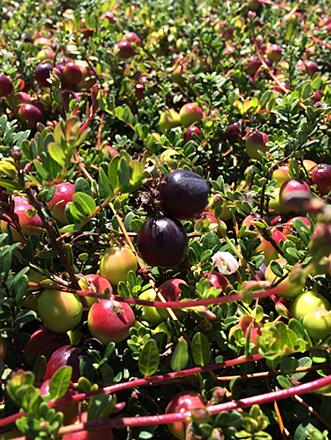Keeping Cranberries on the Holiday Dinner Menu

For many families, a Thanksgiving meal just wouldn't be the same without the sweet/tart goodness of cranberry dishes. An Agricultural Research Service (ARS)-funded project at Oregon State University (OSU) is working to ensure that staple stays on the table.
Weeds – moss in particular – are a big challenge to cranberry production, but the number of herbicides labeled for use on cranberry is relatively low, said Cassie Bouska, associate professor of practice with OSU Extension Service.
"We lack effective controls for weeds that can, and ultimately will, take over a cranberry bed and drastically reduce production," Bouska said.
Research in the state of Washington found that increasing moss pressure reduced yield by at least half. Although cranberry prices are increasing, they have been so low in recent years that many growers have struggled to break even.
"That impacts the economic stability of farm families and rural communities," Bouska said. "An economically sustainable farm can move forward and find ways to improve its environmental sustainability."
A cranberry bed is a complete mat of cranberry vines – 100% ground cover. Established weeds are difficult to control and hand weeding is time-consuming and expensive. As a result, the research team is studying various weed control tools and techniques to tackle troublesome weeds and may be closing in a breakthrough.
"We've tested some products that are very effective at controlling moss, while causing minimal or no damage to the cranberries," she said. "Next year's field work will provide indications of whether there are additive effects of year-on-year applications. We're optimistic that we have some good candidates with which we can move ahead."



